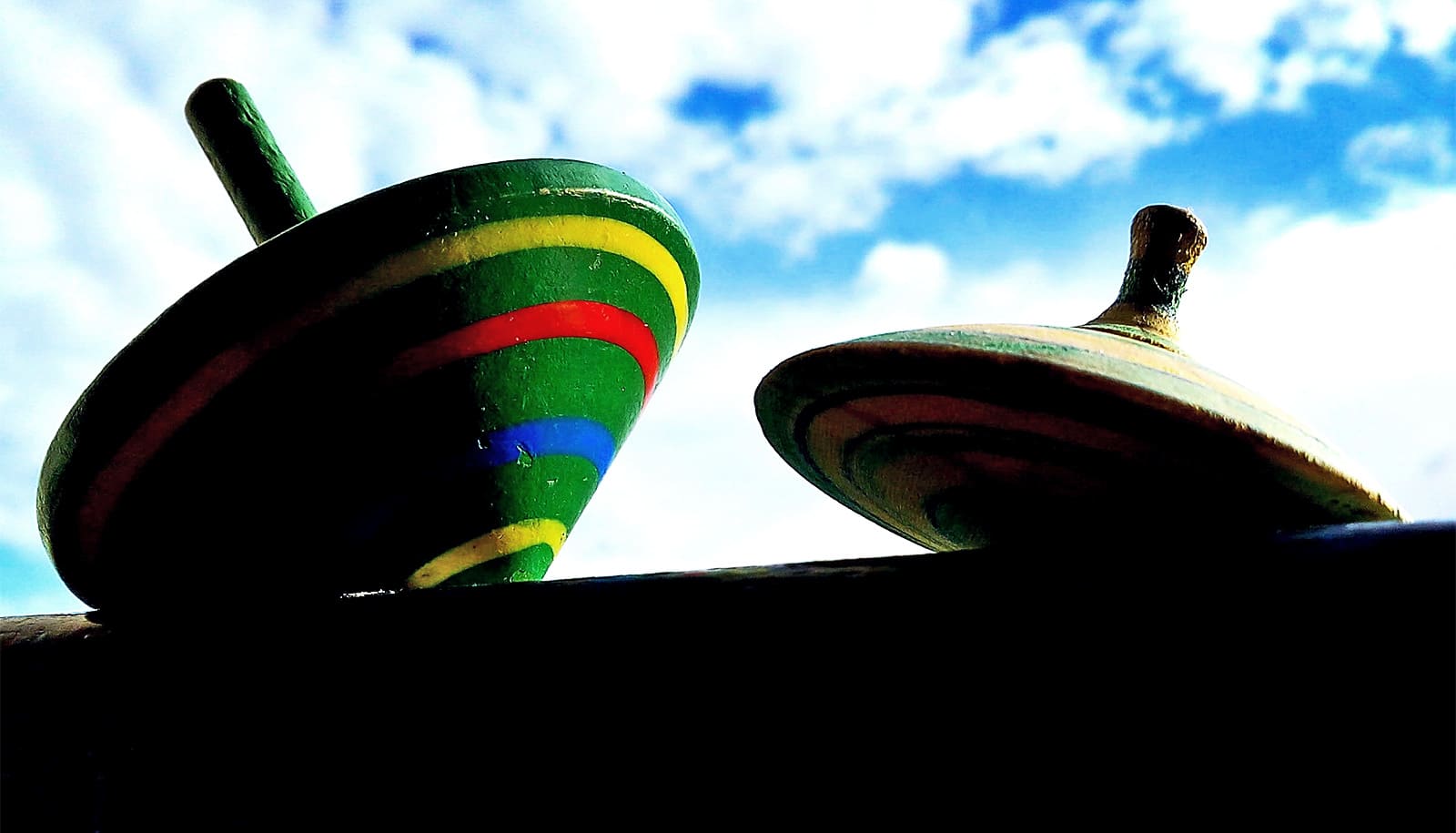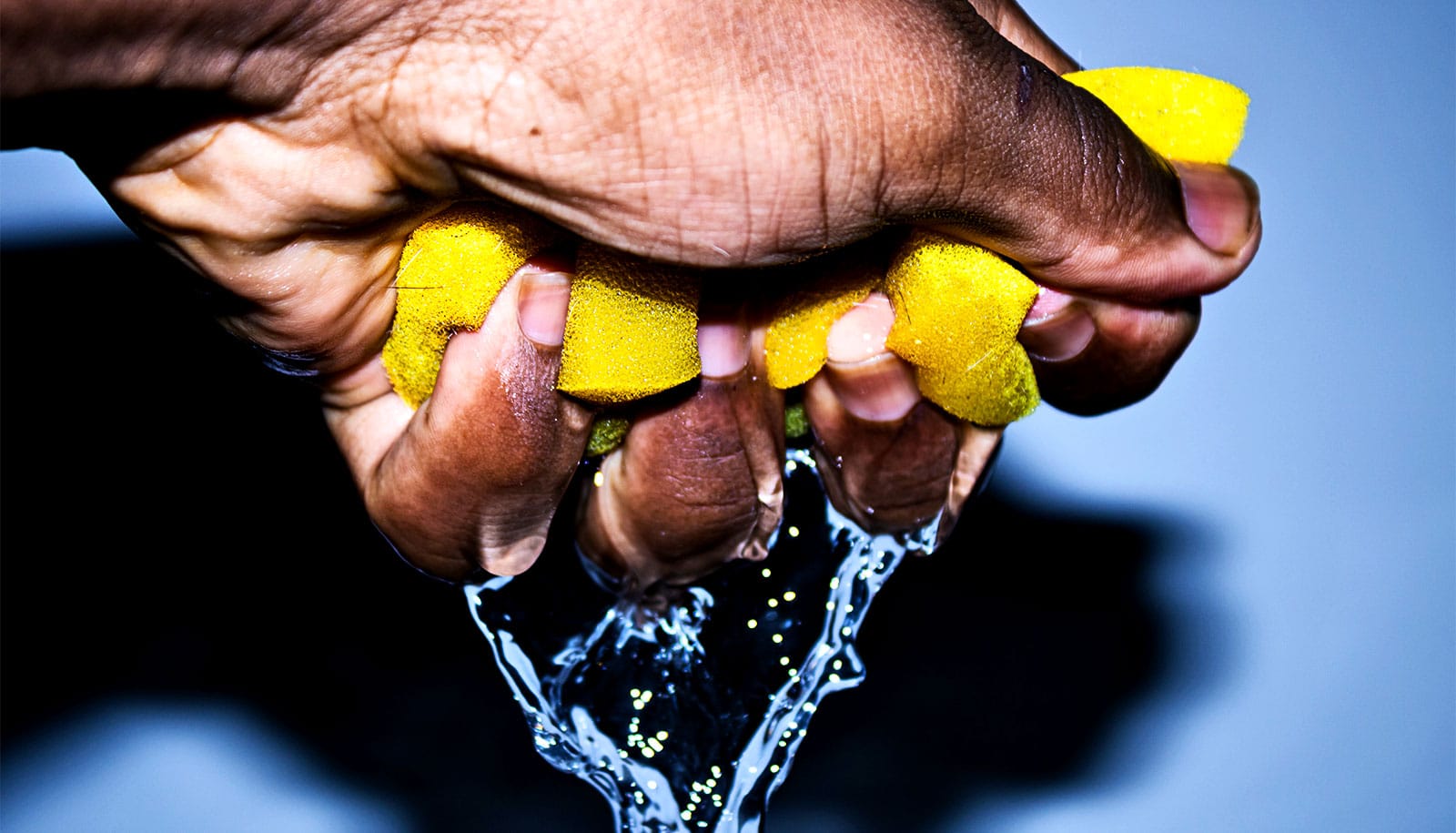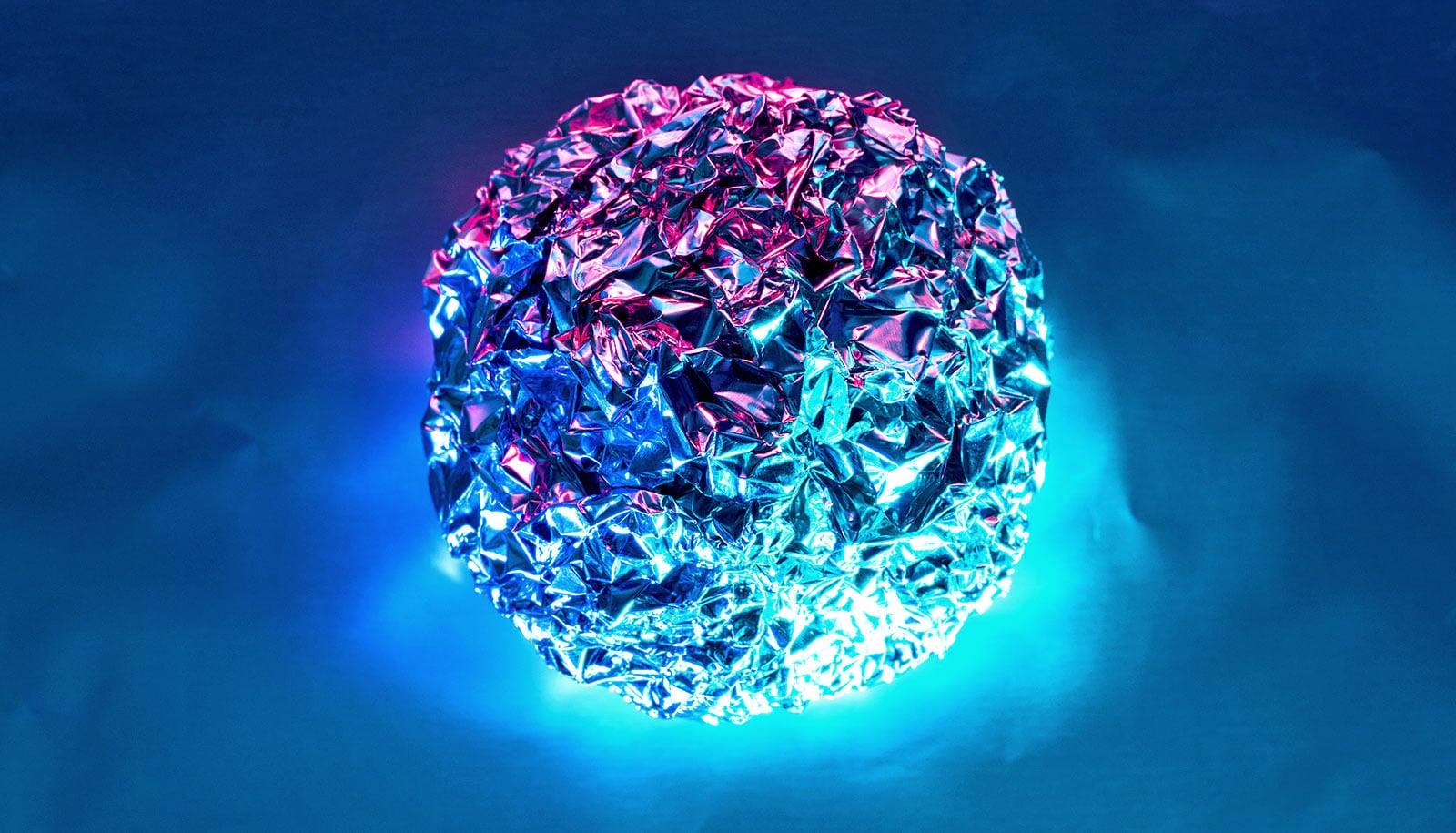
(Credit: Getty Images )
Collision may explain asteroid Bennu’s ‘spinning top’ shape
Simulations may solve the mystery of why some asteroids like Bennu have a "spinning top" shape. The work points to the origins of these kinds of asteroids.
Researchers with NASA’s first asteroid sample return mission, OSIRIS-REx, are gaining a new understanding of asteroid Bennu’s carbon-rich material and signature “spinning-top” shape.
Bennu, the target asteroid for the OSIRIS-REx mission, and Ryugu, the target of the Japan Aerospace Exploration Agency’s Hayabusa2 asteroid sample return mission, are composed of fragments of larger bodies that shattered upon colliding with other objects. The small fragments reaccumulated to form an aggregate body.
Bennu and Ryugu may actually have formed in this way from the same original shattered parent body. Now, scientists are looking to discover what processes led to specific characteristics of these asteroids, such as their shape and mineralogy.

Bennu and Ryugu are both “spinning-top” asteroids, which means they have a pronounced equatorial ridge. Until now, scientists thought that this shape formed as the result of thermal forces, called the YORP effect. The YORP effect increases the speed of the asteroid’s spin, and over millions of years, material near the poles could have migrated to accumulate on the equator, eventually forming a spinning-top shape—meaning that the shape would have formed relatively recently.
However, in a new paper in Nature Communications , scientists from the OSIRIS-REx and Hayabusa2 teams argue that the YORP effect may not explain the shape of either Bennu or Ryugu. Both asteroids have large impact craters on their equators, and their size suggests that these craters are some of Bennu’s oldest surface features. Since the craters cover the equatorial ridges, their spinning-top shapes must also have been formed much earlier.
“Using computer simulations that model the impact that broke up Bennu’s parent body, we show that these asteroids either formed directly as top-shapes, or achieved the shape early after their formation in the main asteroid belt,” says co-lead author Ronald Ballouz, OSIRIS-REx postdoctoral research associate at the University of Arizona.
“The presence of the large equatorial craters on these asteroids, as seen in images returned by the spacecraft, rules out that the asteroids experienced a recent reshaping due to the YORP effect. We would expect these craters to have disappeared with a recent YORP-induced reshaping of the asteroid.”
In addition to their shapes, Bennu and Ryugu also both contain water-bearing surface material in the form of clay minerals. Ryugu’s surface material is less water-rich than Bennu’s, which implies that Ryugu’s material experienced more heating at some point.
Assuming Bennu and Ryugu formed simultaneously, the paper explores two possible explanations for the different hydration levels of the two bodies based on the team’s computer simulations.
One hypothesis suggests that when the parent asteroid was disrupted, Bennu formed from material closer to the original surface, while Ryugu contained more material from near the parent body’s original center.
Another possible explanation for the difference in hydration levels is that the fragments experienced different levels of heating during the parent asteroid’s disruption. If this is the case, Ryugu’s source material is likely from an area near the impact point, where temperatures were higher. Bennu’s material would have come from a region that didn’t undergo as much heating, and was likely farther from the point of impact.
Analysis of the returned samples and further observational analysis of the asteroids’ surfaces will provide a clearer idea of the possible shared history of the two asteroids.
“These simulations provide valuable new insights into how Bennu and Ryugu formed,” says Dante Lauretta, OSIRIS-REx principal investigator and professor of planetary sciences. “Once we have the returned samples of these two asteroids in the lab, we may be able to further confirm these models, possibly revealing the true relationship between the two asteroids.”
Scientists anticipate that the samples will also provide new insights into the origins, formation, and evolution of other carbonaceous asteroids and meteorites. The Japan Aerospace Exploration Agency’s Hayabusa2 mission is currently making its way back to Earth, and is scheduled to deliver its samples of Ryugu late this year. The OSIRIS-REx mission will perform its first sample collection attempt at Bennu on October 20 and will deliver its samples to Earth on September 24, 2023.
Source: Brittany Enos for University of Arizona
The post Collision may explain asteroid Bennu’s ‘spinning top’ shape appeared first on Futurity .
Share this article:
This article uses material from the Futurity article, and is licenced under a CC BY-SA 4.0 International License. Images, videos and audio are available under their respective licenses.
Related Articles:
Clues hint at how asteroid Ryugu lost its water
Jan. 25, 2021 • futurityWeird blue asteroid is even stranger than we thought
Oct. 30, 2018 • futurityLinks/images:
- https://www.futurity.org/asteroids-planets-1804202-2/
- https://doi.org/10.1038/s41467-020-16433-z
- https://www.futurity.org/asteroids-random-1375142/
- https://www.futurity.org/bennu-asteroid-osiris-rex-2017182-2/
- https://uanews.arizona.edu/story/asteroids-bennu-and-ryugu-may-have-formed-directly-collision-space
- https://www.futurity.org/asteroids-bennu-spinning-top-ryugu-2378452/
- https://www.futurity.org


